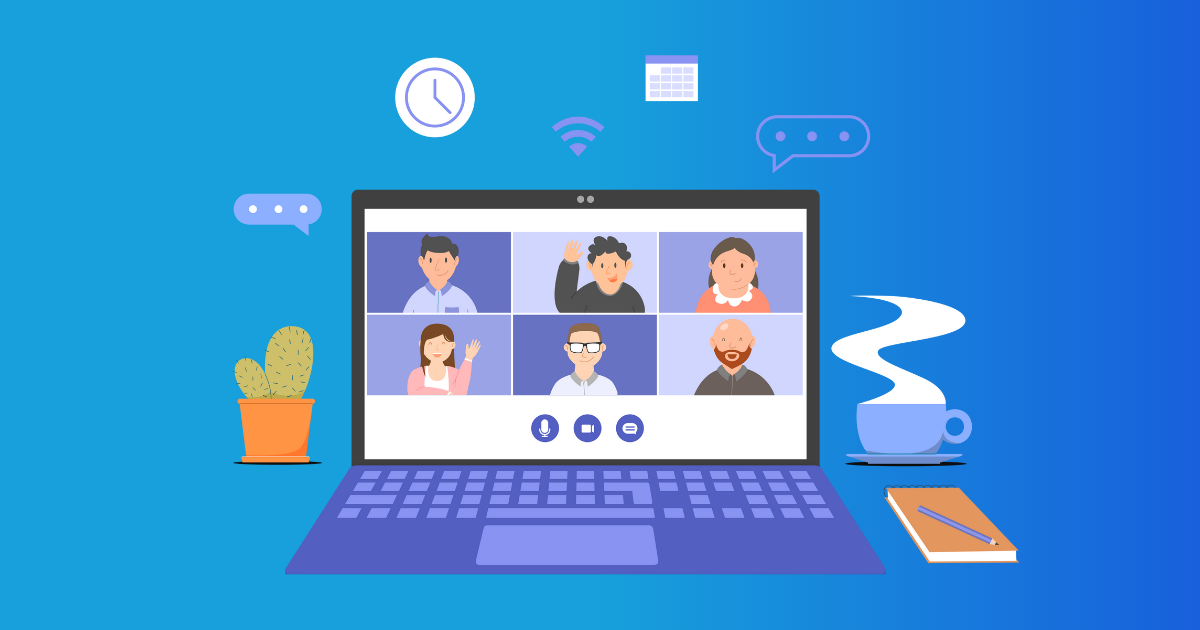Table of Contents
- What is Telemedicine Open Source?
- Real-World Use Cases
- Why Open Source Video Conferencing Wins in Telehealth
- 1. Security and Privacy First
- 2. Cost-Effective and Flexible
- 3. Customization Meets Healthcare Needs
- 4. Interoperability and Vendor Independence
- Step-by-Step Guide to Using Jitsi for Telehealth Video Calls
- Step 1: Understand Your Telehealth Requirements
- Step 2: Choose Hosting Options
- Step 3: Configure Secure Health Conferencing Features
- Step 4: Integrate with Your Workflow
- Step 5: Train Your Staff and Patients
- Step 6: Monitor and Improve
- Real-Life Success Stories of Telemedicine Open Source Adoption
- Addressing Common Concerns: Security & Compliance
- Looking Ahead: The Future of Open Source in Telehealth
- Conclusion
Telehealth is on the rise, with more healthcare providers offering remote services every day. If you’re after a secure, flexible solution, telemedicine open source platforms are a smart pick. Among them, Jitsi is a standout tool for healthcare video calls and secure health conferencing. We’ll dig into why open source video conferencing is carving out the future of telehealth and how you can start using it effectively.
What is Telemedicine Open Source?
Telemedicine open source involves software tools and platforms that aid in healthcare delivery remotely with freely accessible source code. So, you can review, tweak, or spruce up the software, unlike those proprietary systems that keep features under lock and key. Open source telehealth platforms like Jitsi are a gem for their mix of flexibility, cost efficiency, and security, making them a top choice for healthcare organizations of all shapes and sizes.
These platforms offer real-time communication tools like video conferencing, screen sharing, chat, and file exchange—must-haves for virtual patient visits. Because the source code is open, healthcare pros can shape the software to match specific regulatory requirements and workflows.
Real-World Use Cases
Take, for instance, a small community clinic in Oregon. They switched to Jitsi to handle more patients without splurging on pricey software licenses. By self-hosting Jitsi on their own servers, the clinic ensured all video calls were locked down with end-to-end encryption. This move slashed costs by 70% and gave clinicians full control over patient data security.
Similarly, a mental health counseling group in Canada went with open source telemedicine software to keep flexible session scheduling and integrate hearing-impaired accessibility features tailored to their patients. Having control over the software source code enabled them to make these adjustments quickly during the pandemic.
Why Open Source Video Conferencing Wins in Telehealth
When dealing with healthcare video calls, providers often bump into issues like high costs, regulatory compliance headaches, interoperability challenges, and security concerns. Open source video conferencing tools come through with unique perks that address these problems head-on.
1. Security and Privacy First
Healthcare organizations deal with sensitive patient info. Secure health conferencing is a must. Open source telemedicine platforms welcome community audits and inspections to spot and fix security flaws quickly. Unlike closed-source software, which can hide vulnerabilities, the transparency in open source strengthens trust.
Jitsi in particular backs end-to-end encryption and offers options to self-host video servers keeping patient data within your reach. This setup helps meet strict regulations like HIPAA in the US and GDPR in Europe.
2. Cost-Effective and Flexible
Traditional telehealth systems can hit you with hefty licensing fees and usage limits. Open source alternatives cut out licensing costs and let organizations scale based on their true needs. Tinkering with features is easier since you can directly change the source code or add plugins.
This flexibility is crucial for smaller providers or startups. It lets them dive into telemedicine quickly and affordably without skimping on quality or security.
3. Customization Meets Healthcare Needs
Healthcare is a mixed bag. Different specialties require unique tools during video calls, whether it’s securely screen sharing X-rays or integrating with electronic health records (EHRs). Open source platforms let IT teams tweak the software, add custom branding, or deploy extra modules with no fuss.
Jitsi’s modular architecture supports this level of customization. Developers can stretch it to include specific healthcare workflows or hook it up with booking systems, making sure telehealth sessions suit both providers and patients.
4. Interoperability and Vendor Independence
Vendor lock-in can trap providers, restricting their ability to switch up systems, leading to hidden costs and lost data control. Open source telemedicine dodges this entirely. Many platforms stick to open standards ensuring compatibility with varied healthcare IT systems.
This means you’re not tied down by one vendor’s roadmap or pricing. Instead, you hold the reins, supporting long-term telehealth growth.
Step-by-Step Guide to Using Jitsi for Telehealth Video Calls
Want to explore how telemedicine open source platforms work? Jitsi is a great starting point. Here’s an easy step-by-step guide for beginners.
Step 1: Understand Your Telehealth Requirements
- How many patients are you serving?
- Do you need group calls or just one-on-one sessions?
- Is compliance with HIPAA or GDPR necessary?
- What devices will your patients use?
These questions help craft your setup.
Step 2: Choose Hosting Options
- Use Jitsi Meet Public Instance: Perfect for testing or low-sensitivity calls.
- Self-Hosting: Deploy your own Jitsi server for full control and security.
Many healthcare providers prefer self-hosting because it keeps data within their network and allows for custom security settings.
Step 3: Configure Secure Health Conferencing Features
- Enable end-to-end encryption.
- Require meeting passwords or access tokens.
- Disable recording unless compliant.
- Use secure TURN servers to ensure stable connections behind firewalls.
Ensure your communication channels are locked down by default.
Step 4: Integrate with Your Workflow
You can embed Jitsi in your website or patient portal, making access easy without extra app downloads. If your EHR supports APIs, you can link Jitsi to automatically trigger calls or securely log session data.
Step 5: Train Your Staff and Patients
Virtual visits need smooth tech management. Provide quick guides or short videos to help users join sessions with no hassle. Train clinicians on troubleshooting and keeping privacy during calls.
Step 6: Monitor and Improve
Use analytics tools or logs to track session quality and catch potential issues. Gather feedback from users to constantly refine your telehealth experience.
Real-Life Success Stories of Telemedicine Open Source Adoption
Several healthcare facilities show how effective open source video conferencing can be in real life. These examples might give you some insights to consider.
-
University Hospital, Spain: When faced with a surge of COVID-19 patients, the hospital set up Jitsi on internal servers, allowing thousands of doctors to conduct consultations remotely without putting patient data at risk. They achieved almost no downtime and high user satisfaction.
-
Rural Clinics in India: Limited internet access and budget constraints led clinics to use lightweight, open source telemedicine tools. By hosting Jitsi on local servers and optimizing for low bandwidth, they significantly improved healthcare access for remote populations.
-
Private Therapy Practices in the US: Small therapy offices switched from costly proprietary platforms to Jitsi, enabling secure health conferencing that protects patient confidentiality while slashing monthly costs.
These diverse use cases show that open source telemedicine works well across different settings, geographies, and specialties.
Addressing Common Concerns: Security & Compliance
Security often tops the list of concerns when picking telehealth platforms. Here’s how open source solutions measure up:
- Encryption: Jitsi provides true end-to-end encryption for one-on-one calls and is working to boost group call encryption.
- HIPAA Compliance: Self-hosting Jitsi with careful setup can achieve HIPAA compliance; this includes secure authentication, encrypted storage, and tight access control.
- Data Sovereignty: Hosting servers locally stops patient data from unnecessary cross-border movement, supporting GDPR and other regional regulations.
- Community Auditing: The global developer community regularly checks and enhances security features, ensuring quick fixes when vulnerabilities pop up.
These strengths make telemedicine open source a dependable choice for secure healthcare video calls.
Looking Ahead: The Future of Open Source in Telehealth
Open source video conferencing will keep shaping telehealth by enabling:
- More integrations between telemedicine platforms and AI tools for diagnostics and decision support.
- Better accessibility with customizable interfaces and adaptive streaming.
- Enhanced security layers using blockchain and zero-trust networking models, building on today’s encryption techniques.
- Wide adoption in low-resource areas due to affordability and scalability.
As healthcare moves toward virtual care models, open source tools like Jitsi lay the groundwork for secure, affordable, and user-friendly telehealth.
Conclusion
Open source telemedicine platforms present clear advantages over closed, proprietary software in healthcare video calls and secure health conferencing. They provide the security, flexibility, affordability, and customization essential for today’s diverse telehealth demands. Jitsi offers a reliable, secure way to connect patients and providers from afar.
If you want to explore telehealth options, consider trying Jitsi’s free platform or plan for a self-hosted solution to fully control your data and workflows. Open source solutions make telehealth more accessible and secure for everyone.
Ready to start your telemedicine journey? Visit Jitsi Meet for a free trial, or check out how to set up your own secure health conferencing server. Taking the first step now will help future-proof your healthcare services with flexible, trusted telehealth tech.
FAQ
Telemedicine open source refers to freely available video conferencing and healthcare software tools that anyone can use, modify, and deploy for remote medical consultations.
It provides secure, customizable, and cost-effective solutions for healthcare video calls, allowing providers to maintain privacy and tailor features to their needs.
Many open source platforms, like [Jitsi](https://jitsi.support/wiki/understanding-jitsi-basics/), offer strong encryption and compliance options, making them reliable for secure health conferencing when properly configured.
Yes, with proper setup and hosting, [Jitsi](https://jitsi.support/wiki/understanding-jitsi-basics/#why-choose-jitsi) can meet HIPAA standards, ensuring data security and patient privacy in telemedicine sessions.
You can start by accessing [Jitsi Meet](https://jitsi.org/jitsi-meet/) online or self-hosting the platform. Then, customize settings for secure health conferencing and share the meeting link with patients.


